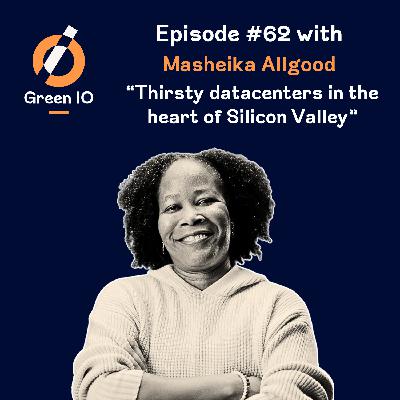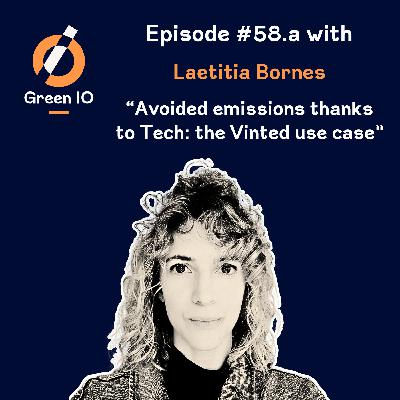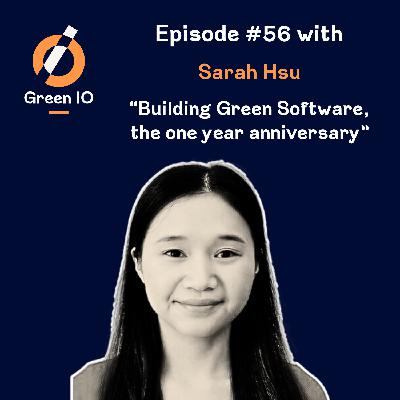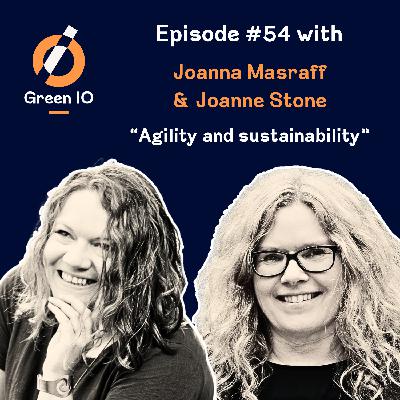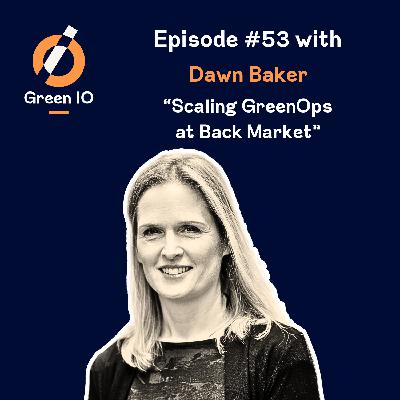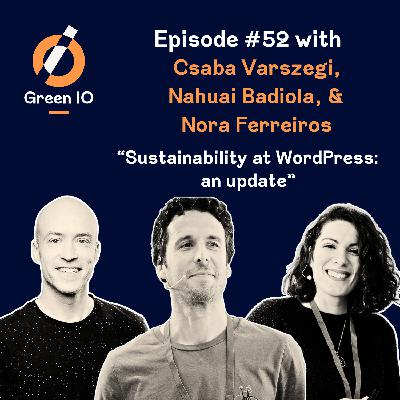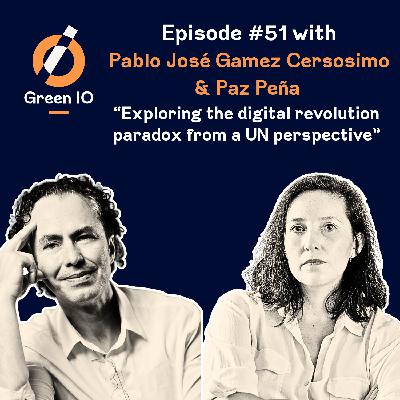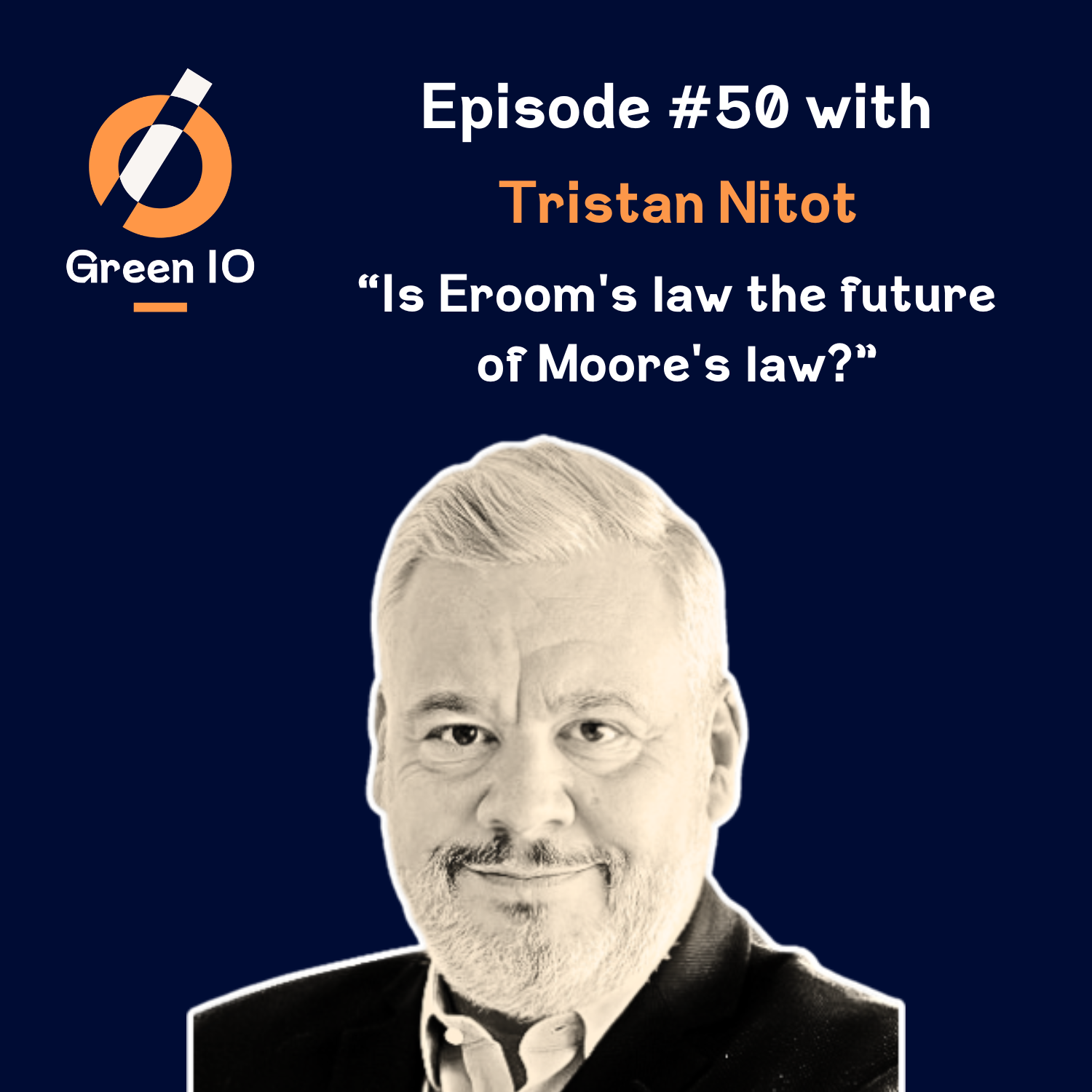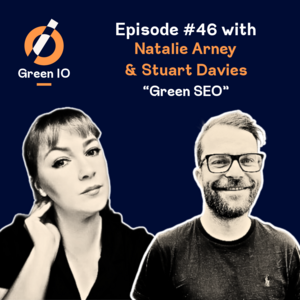#58b Avoided emissions thanks to Tech: the Vinted use case with Laetitia Bornes - Part 2
Update: 2025-05-27
Description
Why is the model of a Nobel prize winner not necessarily good science? What is “good” modelling? Is access to information enough to change a system behavior?
This episode is the second part of a long interview with Laetitia Bornes, a Doctor in Human-Computer Interaction, Systems Engineering and Systemic Design who is one of the co-authors of a research paper investigating the claims made by the second hand digital platform Vinted about the avoided carbon emissions thanks to its operations. As presented in the first part, their findings were surprising, enlightening for the IT sector and nuanced!
In this second part, Gaël Duez and Laetitia Bornes moved away from the Vinted use case and discussed modelling, the scientific method and Systems Thinking in general. You can enjoy this discussion without having listened to the first episode however we would suggest you do so to enjoy all the references, especially to the Vinted study. Among the topics covered in this second part are:
- An impressive transparency exercise about the limit of the model used for the Vinted use case,
- Why models are “wrong” and how to still use them purposefully,
- Why a Nobel prize modeling in his lab without publishing isn’t doing science (yet),
- Access to information and its connection to the four main categories of leverage points,
- The concept of protopia,
And much more!
❤️ Subscribe, follow, like, ... stay connected the way you want to never miss an episode, twice a month, on Tuesday!
📧 Once a month, you get carefully curated news on digital sustainability packed with exclusive Green IO contents, subscribe to the Green IO newsletter here.
📣 Green IO next Conference is in Munich on July 2nd and 3rd. Green IO listeners can get a free ticket using the voucher GREENIOVIP. A small gift for your huge support. 🎁
Learn more about our guest and connect
- Laetitia’s LinkedIn
- Laetitia’s website presenting her work in more detail
- Green IO website
- Green IO Slack
- Gaël Duez's website
📧 You can also send us an email at contact@greenio.tech to share your feedback and suggest future guests or topics.
Laetitia's sources and other references mentioned in this episode
- The Rebound Archetypes tool co-designed by Laetitia Bornes
- The Magnitude tool designed and co-developed by Laetitia Bornes
- Decision-Making Under Environmental Complexity: The Need for Moving from Avoided Impacts of ICT Solutions to Systems Thinking Approaches by Laetitia Bornes and David Ekchajzer
- Systemic Sustainable HCI: Integrating Collaborative Modeling into a Design Process to Address Rebound Effects by Laetitia Bornes
- Les émissions évitées de la numérisation by Gauthier Roussilhe
- Vinted Climate change impact report
- Donnella Meadows’ Thinking In Systems: A Primer
- ADEME report: Environmental assessment of the direct and indirect effects of digital technology on use cases
- The Ministry for the Future (Kim Stanley Robinson)
- Your Life in Numbers: Modeling Society Through Data (Pablo Jensen)
- Leverage Points: Places to Intervene in a System (Donella Meadows)
- Finding (a theory of) Leverage for Systemic Change: A systemic design research agenda (Ryan Murphy)
- Relating Systems thinking and Design (RSD) conference
- "Must read" books about the modelling part of systems thinking ("first wave" = "hard systems thinking"):
- Important authors regarding the "second wave" of systems thinking ("soft systems thinking"):
Transcript (auto-generated)
Laetitia Bornes (00:01 )
The problem is when you put a model that has been made for a given purpose in the hands of someone who doesn't know who doesn't want to recognize its scope and who therefore uses it outside of its field of validity.
Gaël Duez (00:18 )
Hello everyone, welcome to Green IO I'm Gaël Duez and in this podcast we empower responsible technologists to build a greener digital world, one bite at a time. Twice a month, on a Tuesday, our guests from across the globe share insights, tools and alternative approaches enabling people within the tech sector and beyond to boost digital sustainability. And because accessible and transparent information is in the DNA of Green IO. All the references mentioned in this episode, as well as the full transcript, are in the show notes. You can find these notes on your favourite podcast platform and, of course, on our website greenio.tech.
This is the second part of my long episode with Letitia Born, a doctor in human-computer interaction, systems engineering and systemic design, who is one of the co-authors of a research paper investigating the claims made by the second-hand digital platform Vinted about the avoided carbon emissions thanks to its operations. As we saw in the first part, their findings were surprising, enlightening for designers and nuanced, with potential applications for the entire digital industry regarding how we assess its potential footprint and handprint, that is the positive impact it brings on our planet and our societies. In this second part, we moved away from the Vinted use case and discussed modelling, the scientific method and system thinking in general. You can enjoy this discussion without having listened to the first episode. However, I would suggest you do so to enjoy all the references, especially to the Vinted study. So Laetitia, when we were discussing how you model the vintage use case and all the results that came along, I had like a ton of question about what are the limit to modeling? What are these assumptions that you built your research paper on, et cetera, et cetera. And I think it's a great opportunity to have a trained researcher, a doctor now on the show to discuss a bit about not the vintage use case itself, but how we actually can do systems thinking in a proper scientific manner. And maybe it's a bit provocative here. My first question about it is, because we know that there is limit to model everywhere, where are you unhappy with the way you model the vintage use case? Whether it's a boundary that you would have changed, some proxy data, which you would have preferred having primary data instead, or it's assumption that you couldn't really double check or shortcuts that you had to take. It's just a sort of transparency exercise that, it's not because you've got a published research paper that everything is flawless and that you didn't have actually to put limitations to the scope of what you wanted to investigate.
Laetitia Bornes (03:43 )
Yeah, So I would say that ⁓ I regret that my model focuses mainly on carbon emissions and not on the other impacts, apart from the loss of income from charities. But this is linked to the fact that I drew on the value study, which focused on avoided emissions in carbon equivalent. I've also made a big shortcut by displaying the number of sales per month to assess the economic viability of a scenario. Because if you change the business model in an inter
Comments
In Channel


